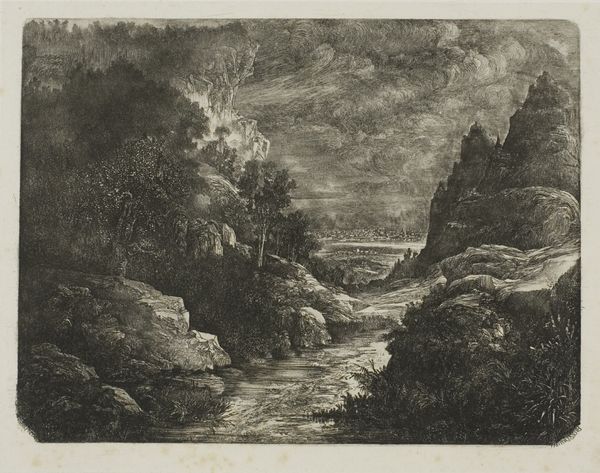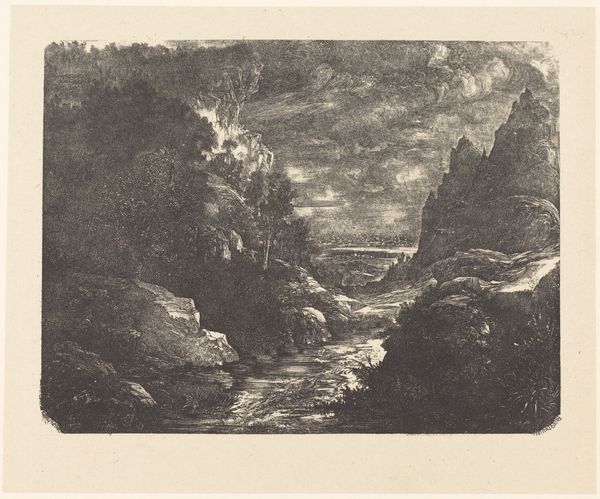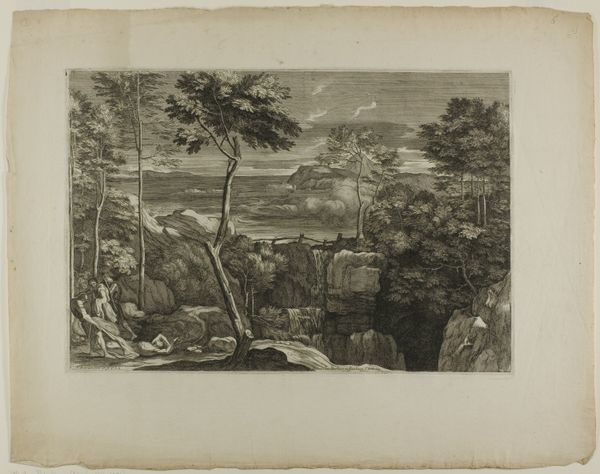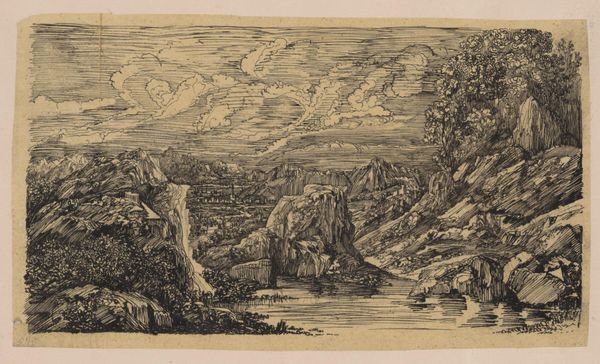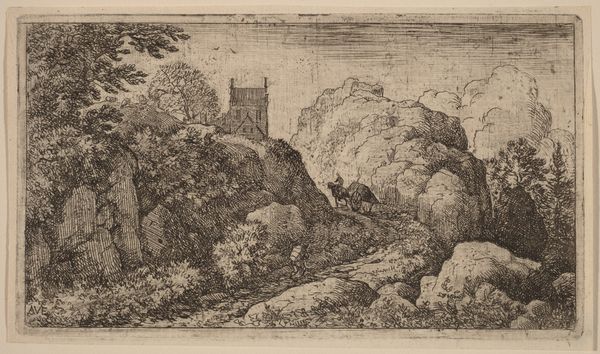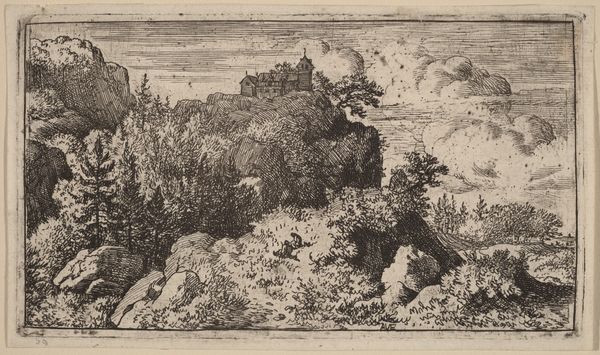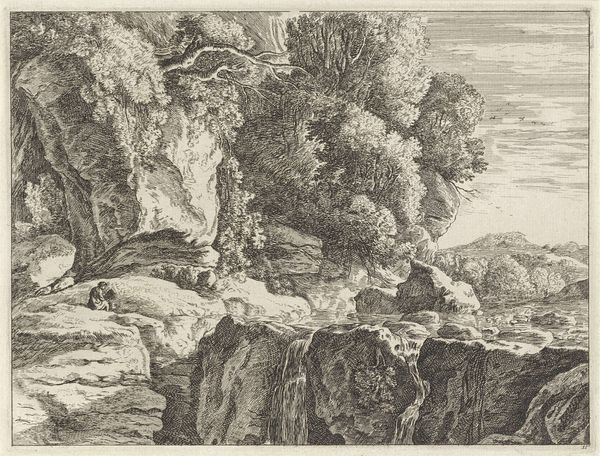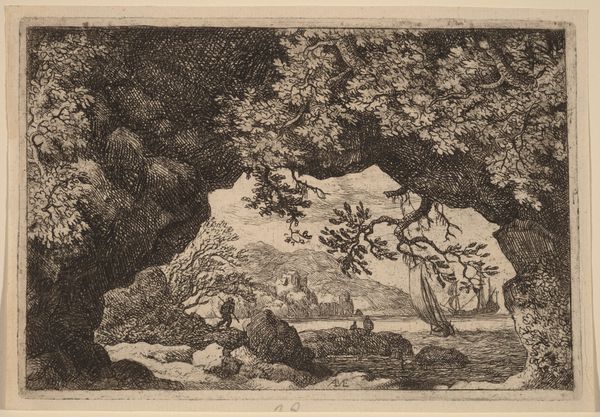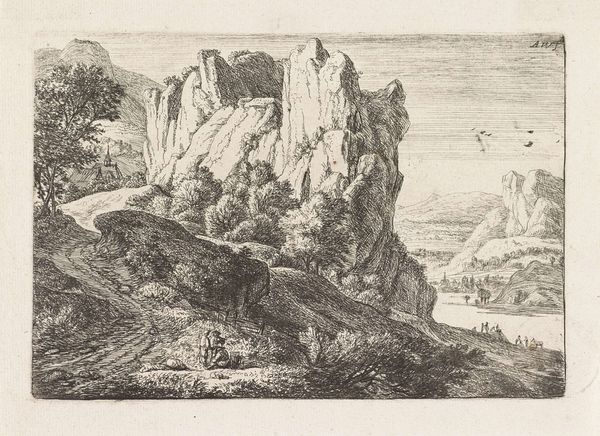
Dimensions: 97 × 181 mm (image); 127 × 208 mm (sheet)
Copyright: Public Domain
Curator: Before us, we have Rodolphe Bresdin's "The Distant City," an etching crafted in 1868. It resides now at The Art Institute of Chicago. Editor: It’s… oppressively detailed, isn't it? A dark landscape leading the eye toward a city shimmering on the horizon, yet everything feels incredibly dense and intricate. Curator: Bresdin worked in an era of massive social upheaval, with the rise of industrial cities and displacement. Consider how he might be portraying anxieties regarding urbanization. The "distant city" might represent the alluring but potentially alienating future. Editor: That perspective makes sense. Visually, though, I’m struck by the duality. We've got this vast landscape, handled with almost maniacal detail using a stark monochromatic palette. Light and shadow wrestle for dominance on the rough textures he's created. Curator: Indeed. Bresdin often struggled financially and aligned himself with anarchist circles. The piece perhaps embodies his critiques of power structures—an almost overwhelming natural world juxtaposed with the artifice of urban civilization. Editor: Look how he's achieved so much texture, from those almost baroque, overgrown plants to the rugged, almost geological formations of those rocks. Curator: And note how Bresdin's Romantic sensibilities evoke an emotional response. He captures a world tinged with a touch of melancholy. He invites us, as viewers, to question the direction of societal advancement. Editor: Absolutely. He guides us to focus attention on its sharp contrasts and intricate textures. The overall effect is immersive, pushing boundaries between Romanticism and a hint of the Symbolist aesthetic emerging later. Curator: Considering its placement in The Art Institute, the artwork invites an audience to think about their place within their social and environmental context. It serves as a commentary on utopian dreams. Editor: Right. His strategic, visual chaos reflects on order. This piece, more than just representation, embodies a conceptual idea that’s as much textural and dark as it is societal.
Comments
No comments
Be the first to comment and join the conversation on the ultimate creative platform.

